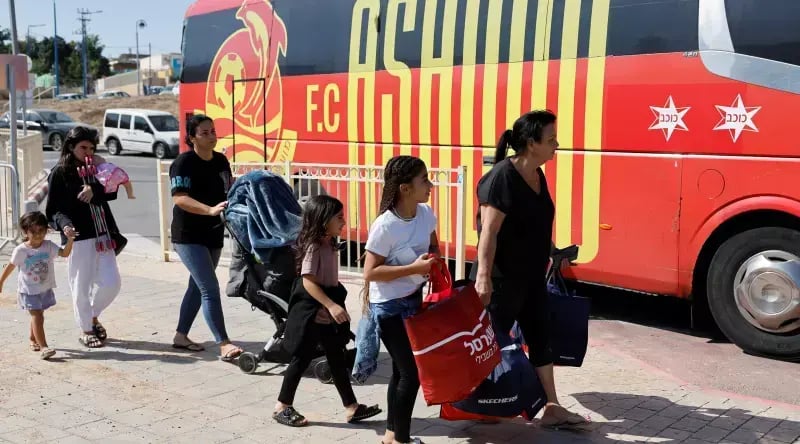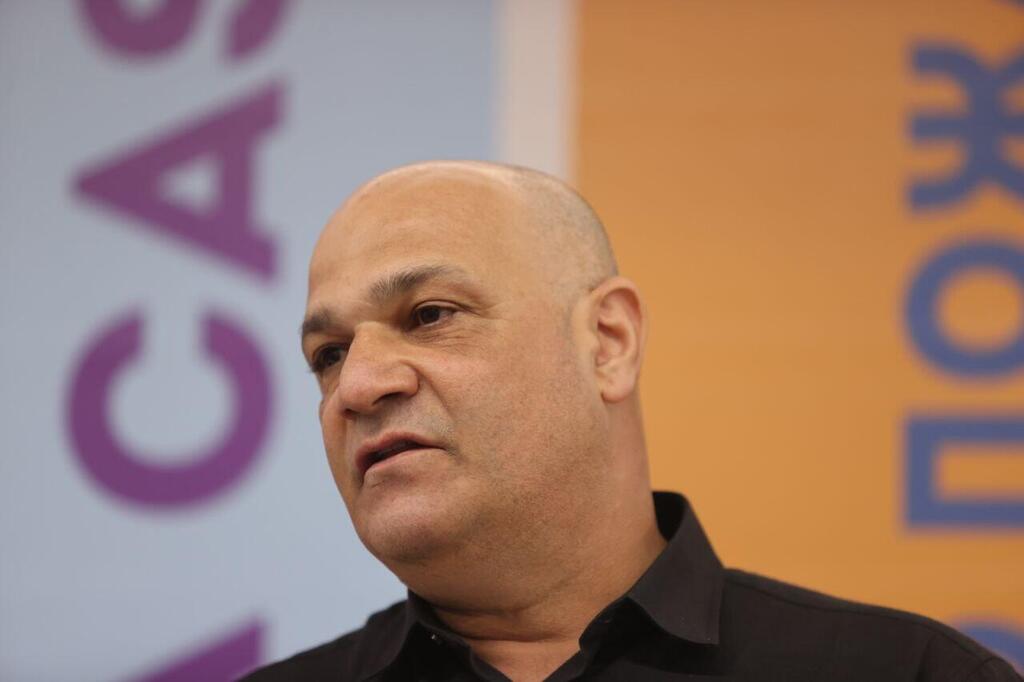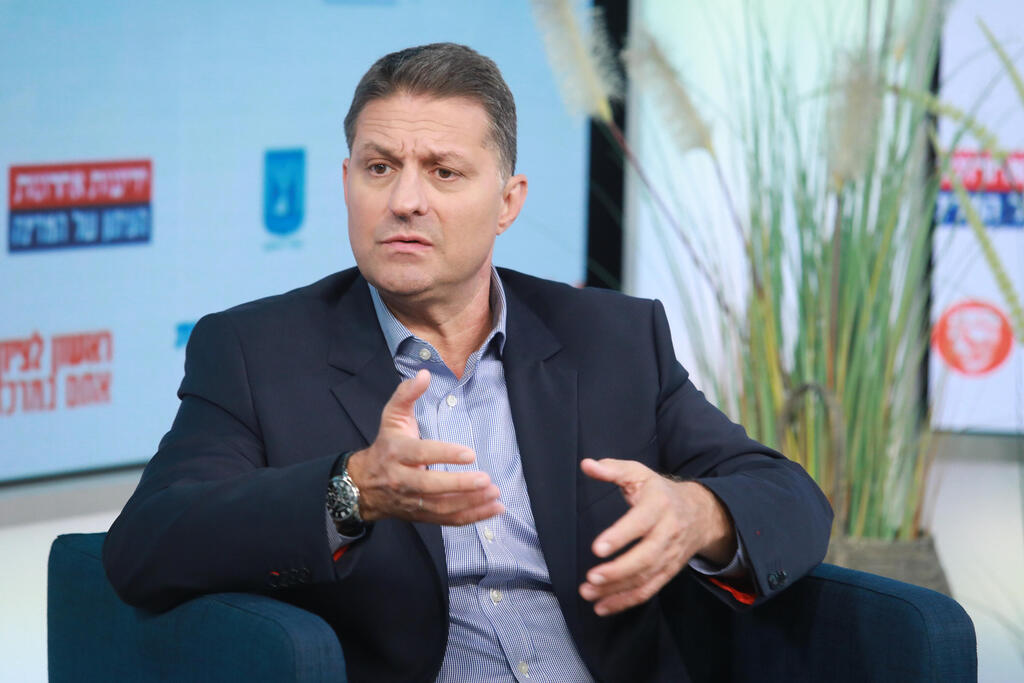"Sunset, the kids are playing in the grass, mothers sitting around drinking coffee, images of a pastoral kibbutz. Only if you truly pay attention, you see the puffed eyes from all the tears, the sleepless nights, the bad news about all those people murdered that constantly haunt us and the kids longing for some kind of normalcy. No matter how you may try to soften the trauma or hide the horrible truth, they know what happened and feel the world shake as we do." These words were written by Sivan Shalchin Amoyal, a Kibbutz Gevim resident who was evacuated and taken in by a kibbutz in the Jordan Valley. Thousands if not tens of thousands of Israelis currently share her feelings: hopelessness, loneliness and longing.
Read more:
"It's been two weeks since we were hastily evacuated from our home after the world came crashing down on us along with our sense of security in the paradise which turned into hell. In the last 10 years, we were evacuated a few times, but never like this. We left en mass, without a date of return, uncertainty and anxiety filling people's minds. Despite the tremendous volunteering efforts, donations and aid given to us by the people of Israel and despite trying to keep ourselves busy for our community, our fear won't disappear. I don't know how we can 'just go back,' something we've done after so many rounds of fighting that we experienced. We never had such a big question mark whether we would be able to go back home the day after."
The people of the north are also evacuating and it seems that the evacuation plans are not being executed properly. "When we felt tensions rising, we decided to leave," Kiryat Shemona resident Eyal Vakrat says. Eyal and his family along with 20,000 other residents of the northern city left their home. When they tried to understand which hotel they were being directed to, bureaucracy got in the way. "We checked with our hotel but we weren't on the list. This shows how the country was not ready for war." That matter was resolved, but meanwhile, most of the residents had nowhere to go. "A lot of people are living in a state of uncertainty," Eyal says.
One of those people is Yael. "We were forsaken. We were sent to a Bedouin campground. My kids have asthma and they can't be in such a place, but I don't have anyone to talk to. I can't change our location and I can't even go anywhere. Like many of the people from Kiryat Shemona, we are lost," she says. The Defense Ministry's National Emergency Management Authority and the IDF announced on Sunday the addition of 14 cities to the northern evacuation plan. However, as the list of people grows longer, more and more residents are left to fend for themselves.
The ongoing fighting in the south and the escalation in the north require Israeli citizens living close to the borders to evacuate to a safe location. As of now, about 120,000 Israelis left their home and are staying in various hospitality locations as part of the evacuation plan.
The displaced citizens are divided into main groups: from the south, people living up to seven km. (3.4 miles) from the Gaza border, including the city of Sderot and the outer circle of Ashdod, Ashqelon and Ofakim. In the north, Kiryat Shemona and 28 other municipalities close to the Lebanon border were displaced.
6 View gallery
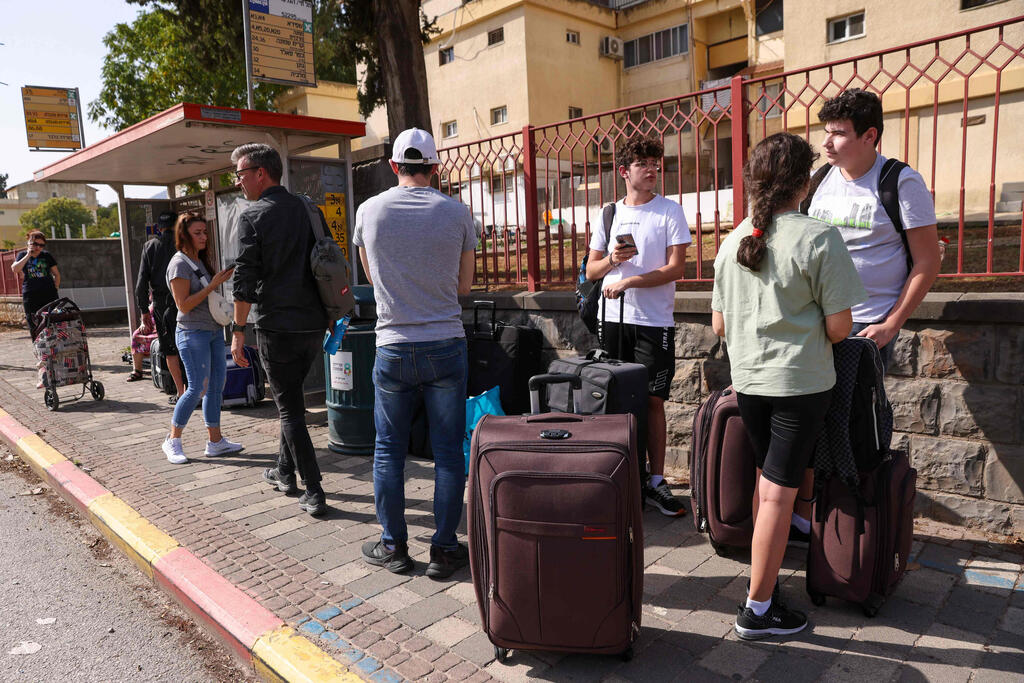

Kiryat Shemona residents waiting for buses to evacuate southward
(Photo: Jalaa MAREY / AFP)
Hotels are nearing full capacity, The National Emergency Management Authority director Brig. Gen. (Res.) Yoram Lardo says he was trying to accommodate everyone. "We are exerting the hospitality resources as much as we can. If further evacuations become necessary, the considerations will be up to the military, approved by the defense minister and we will house the displaced people in public facilities such as schools. The plan is ready and we're doing our best to avoid it."
The municipalities are calling for help
Although the state is subsidizing the cost of housing those who were evacuation, local municipalities also allocated resources for hospitality, medical and emotional treatments but most of the funding from the government has yet to arrive. The Head of the Federation of Local Authorities, Haim Bibas warns "The state must transfer funds to the municipalities immediately or they would collapse. We can't weather this alone and we can't wait for the government's bureaucracy."
The city to receive the most displaced Israelis has been Eilat which has doubled its population since the beginning of the war. "We have accommodated over 60,000 evacuees. I hope the government acts with less bureaucracy," Eilat mayor Eli Lankri says. "We will have the time to settle things later, but right now we need to pull together and care for our people. Eilat is preparing to build a tent city to house more people if necessary."
Nir Wanger, from the Tamar Regional Council in the Arava desert, said around 10,000 people were being housed there. "We opened a school for the children of Sderot. We intend to open a school for the rest of the evacuated municipalities, but it depends on the Education Ministry that must transfer funds. The Social Services Ministry was the first to allocate money, and the Education Ministry is helping with solutions but the money hasn't arrived yet. Our regional council here has been working for 14 days straight around the clock to care for the evacuees."
6 View gallery
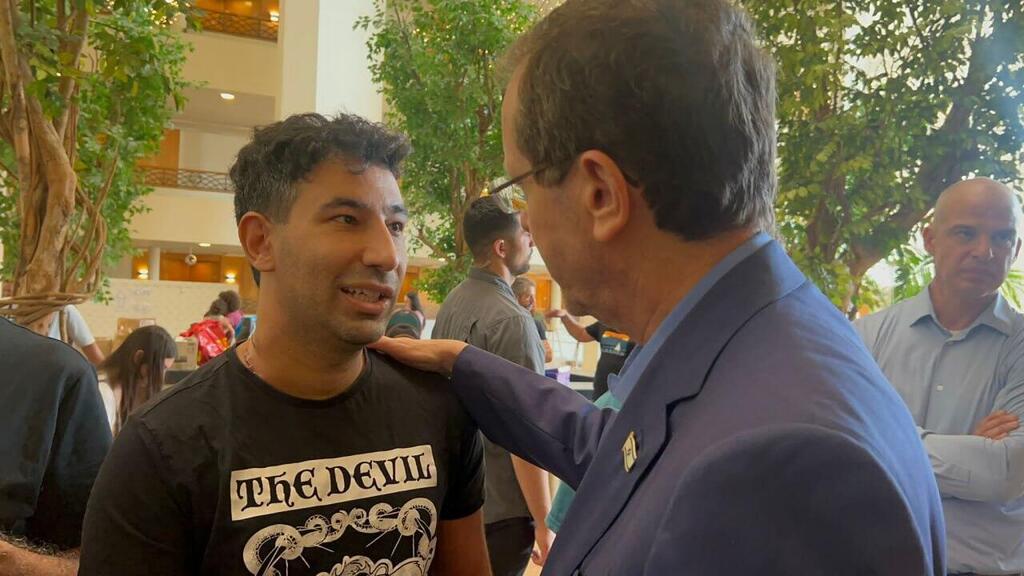

President Isaac Herzog meeting Kibbutz Be'eri survivors in Tamar Regional Council
(Photo: tThe President's Residence)
In Ramat Gan residents were surprised to see a new 'glamping' site built on the grounds of a local hotel, to house evacuees.



